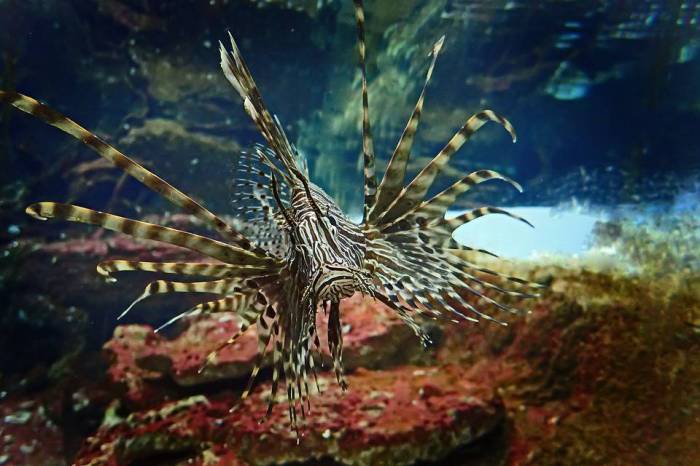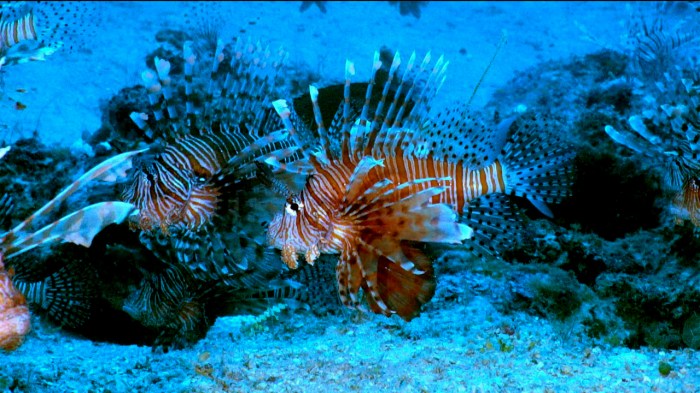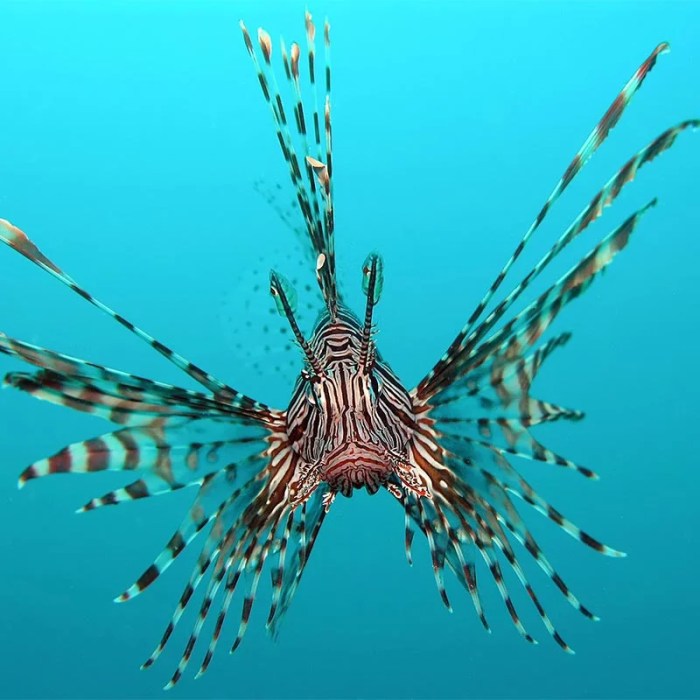Lionfish invasion density-dependent population dynamics answer key unlocks the complexities of the lionfish invasion and its profound effects on marine ecosystems. This comprehensive guide unravels the factors influencing lionfish population growth, their ecological impacts, and the challenges and strategies for managing these invasive predators.
Understanding the density-dependent dynamics of lionfish populations is crucial for developing effective management strategies. This answer key provides insights into the mechanisms driving lionfish population growth and the cascading effects on native species and ecosystem functioning.
Introduction

The lionfish invasion is a significant threat to marine ecosystems worldwide. Lionfish are native to the Indo-Pacific region but have become invasive in the Atlantic Ocean, Caribbean Sea, and Mediterranean Sea. Their rapid spread and voracious appetite have had devastating impacts on native fish populations and coral reefs.
Lionfish are opportunistic predators that feed on a wide range of fish and invertebrates. They have few natural predators in their new environments, which has allowed their populations to explode. Additionally, lionfish are highly fecund, producing up to 30,000 eggs every four days.
Density-Dependent Population Dynamics

Density-dependent population dynamics refers to the relationship between population growth rate and population density. In the case of lionfish, several factors influence their population growth rate, including food availability, predation, and competition.
When lionfish populations are low, they have access to abundant food resources and experience low predation pressure. This leads to rapid population growth. However, as lionfish populations increase, food availability decreases and predation pressure increases. This causes the population growth rate to slow down.
Impacts of Lionfish Invasion on Native Ecosystems: Lionfish Invasion Density-dependent Population Dynamics Answer Key
The lionfish invasion has had a devastating impact on native fish populations and coral reefs. Lionfish compete with native fish for food and shelter, and they often prey on juvenile fish. This has led to declines in native fish populations and disruptions in food webs.
Lionfish also prey on coral-eating fish, which has allowed coral populations to flourish in some areas. However, this can lead to an imbalance in the ecosystem, as too much coral growth can block out sunlight and prevent other organisms from thriving.
Management Strategies for Lionfish Control

Managing lionfish populations is a complex challenge. Several approaches have been used, including mechanical removal, chemical control, and biological control.
Mechanical removal involves physically removing lionfish from the environment using nets, spears, or traps. This method can be effective in reducing lionfish populations in small areas, but it is labor-intensive and can be difficult to implement on a large scale.
General Inquiries
What is density-dependent population dynamics?
Density-dependent population dynamics refers to the relationship between population growth rate and population density. As population density increases, factors such as resource availability, competition, and disease prevalence can limit population growth.
How do lionfish impact native ecosystems?
Lionfish are voracious predators that can decimate native fish populations, disrupt food webs, and damage coral reefs. They also compete with native species for resources and can transmit diseases.
What are the challenges of managing lionfish populations?
Managing lionfish populations is challenging due to their rapid reproductive rate, adaptability to various habitats, and lack of natural predators in invaded areas. Effective management requires a combination of approaches, including mechanical removal, chemical control, and biological control.